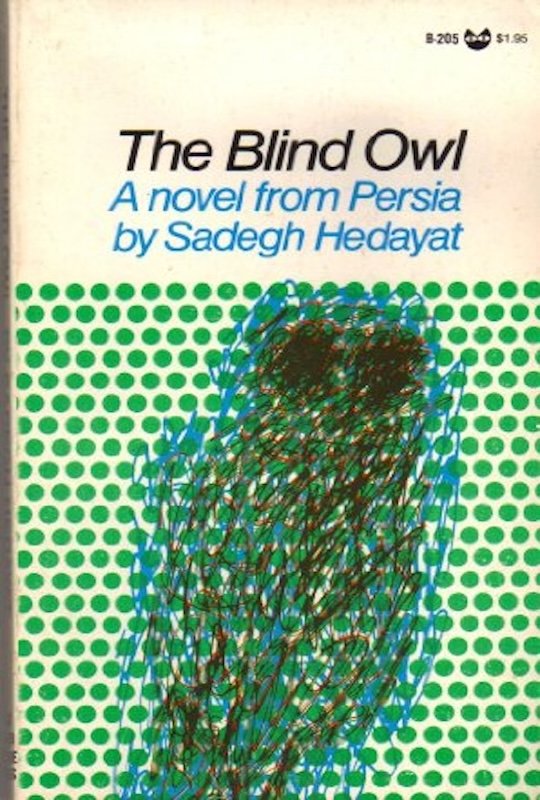
The Blind Owl
What better way to celebrate our Iranian Horror Week than with this despairingly macabre, opium-soaked, Poe-esque tale from one of Persia’s most beloved novelists.
Sadegh Hedayat’s The Blind Owl centers on an unnamed opium-addicted narrator who, upon being spurned by his lover, spirals into a decaying pit of addiction and misanthropy. Unwilling to interact with the outside world, the narrator begins confessing a lifetime of sin to a shadow on the wall.
The novella utilizes a disjointed timeline of events, recurring imagery, mirrored themes, and even recycled character tropes to cast an intoxicating spell of surrealist brutality upon the reader. Thematically as dark and disturbing a book that you may come across, Hedayat’s attempt to address the shadow-self is counterbalanced by a flowing poetic language that dances rich with realistic detail before veering into more dreamy impressionism.
Author Sadegh Hedayat himself lived a troubled life. Having been born in Iran, Hedayat went off to college in France, where he soon tried to kill himself for the first time. Fortunately, he survived, and moved back home to Iran to continue his literary studies on his own. Immersing himself in both the canon of Western literature as well as ancient Persian folklore, Hedayat was both worldly and nationalistic, a duality that manifests in the novel in the form of the narrator’s shameful attitude towards the decline of the Persian empire and diminished status of Iran on the world stage.
